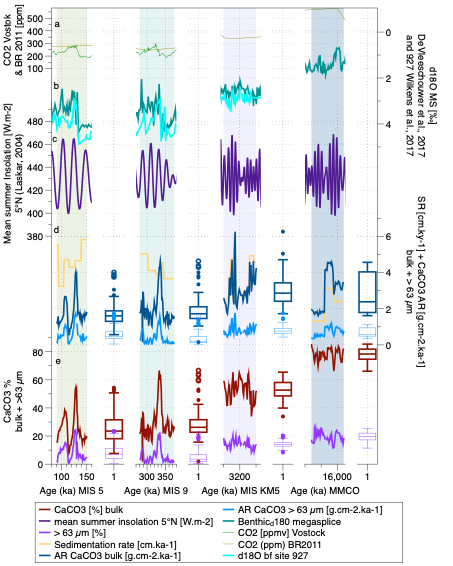- Cluster Ocean Floor
- Research Unit RECORDER
- Projects
- Bioproductivity in a warmer world
Bioproductivity in a warmer world
Problem statement
Pelagic carbonate producers play a key role in the marine carbon cycle by exporting carbon to the deep ocean. Understanding how and why pelagic carbonate production changed in the past in response to environmental forcing, especially during warm periods of the recent Earth history is necessary to constrain its future under projected climate change scenarios. Past changes in carbonate production can be derived from sedimentary records of carbonate accumulation in settings where the effect of post depositional dissolution is negligible. Here we make use of the uniquely resolved and orbitally dated sediment records from Ceara Rise to asses the nature and the origin of variations in pelagic carbonate production in the tropical Atlantic. We generated new high-resolution records of CaCO3 accumulation rate (AR) at ODP Site 927 for the Quaternary interglacials MIS 5, MIS 9, for the Pliocene warm period (PWP) and for the Mid-Miocene climate optimum (MMCO). We observe that pelagic carbonate production at the studied site varied in pace and in phase with local insolation, rather than with global climate (ice volume).Beyond the orbital variations, we observe a secular signal indicating a ~ 50 % decrease in AR from the Miocene towards the Quaternary. This trend does not appear to occur due to orbital variability and cannot be explained by dissolution or age model uncertainty and we conclude that the mean pelagic carbonate production at the studied site differed among the climate states. Given this observation, it is now of interest to interrogate the causes of these differences and reveal its mechanism by evaluating the relative contribution and biomineralisation intensity of the main pelagic calcifiers.



